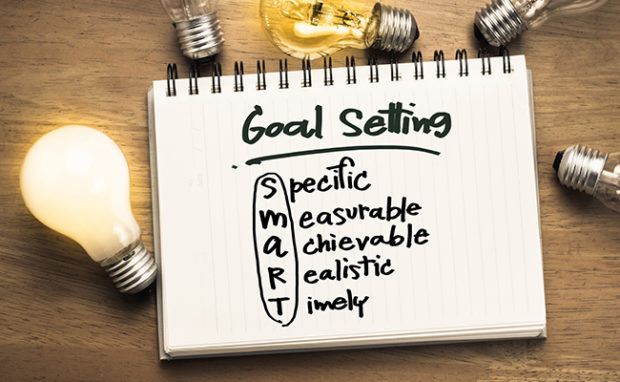How to Develop a Marketing Strategy
No matter what kind of business you own, how to develop a marketing strategy affects every aspect of your business. In order to be successful, you will want a marketing strategy that is well thought out and presents measurable goals. The end result of your marketing strategy should be something that improves sales for your business.
Once you have the concept of your business, thinking about a marketing strategy can be daunting. Especially, if you are not a marketing guru.
But with this step by step guide, we can walk you through the process of developing an excellent marketing strategy for your business without getting overwhelmed.
Having a good marketing strategy will set you apart from your competition and set you up for success in your market.
By using this step-by-step process to develop your marketing strategy, you will be certain to not overlook any key details that can make or break your strategies.
Researching and understanding your market is a big part of the process of developing a marketing strategy.
So, this is not a process where you want to skip to the end. That will not guarantee you the best results.
What are the key parts of developing your marketing strategy? The first step is to clarify your business goals.
Set S.M.A.R.T. Goals for Your Business

Before creating any strategy, you need to know your desired end result.
That’s why the very first step for you to develop a marketing strategy is for you to identify your overall business goals.
Your marketing strategy will affect every part of your business, so it’s a good idea to get your entire team involved in this process.
The best way to set your business goals is by using the acronym S.M.A.R.T. Smart goals are identified as specific, measurable, achievable, relevant and time-sensitive goals.
So, instead of making your goal, “get more customers.” A more effective goal would be, “reach x customer segment by y date.”
This goal clearly states a tangible achievement in a certain period of time. S.M.A.R.T. goals allow you to track your progress and celebrate small wins or re-evaluate your marketing strategy down the road with more efficiency.
Identify Your Marketing Goals Based on Your Business Goals

Now that you’ve completed step 1, it is time to identify your marketing goals. Your marketing goals should be S.M.A.R.T. goals.
Your marketing goals function as an action item for your overall business goals.
So, whatever goal you set for your marketing strategy, it should be something that will lead to the outcome that you want for your business (i.e. reach x customer segment by y date).
An example of a good marketing goal would be to “sell existing products to a new target market.” Your marketing goals should not be goals that you change constantly.
They should be a steady goal that can be increased or revised once your previous goal is achieved.
Learn Your Market

Now that you have created your marketing goals with your team and you are excited, it is time for a very important part of your marketing strategy development – research!
Getting to know your market is a key component for you to develop your marketing strategy.
You should consider demographics, size, social trends and growth so that you can create a strategy that is relevant.
Continuous research of your market will allow you to tweak your marketing strategy over time to keep it targeted and relevant to your market.
Create Potential Customer Profiles

After you’ve researched your market, it’s time to dig deeper.
You will want to create profiles of your potential customers so that you understand who you are trying to influence your marketing strategy.
Your marketing plan should be highlighting your potential customers’ needs and providing a solution.
For this, you will have to understand the needs of your potential customers and their buying trends. What do they buy? How do they purchase it? Where do they buy it?
Understanding your potential customer will allow you to develop a marketing strategy that specifically targets them.
By being able to create targeted content and distribute it to the right places, you’ll ensure that you are attracting the right kind of customer.
Once you can target the customer, the potential customer profiles can also help you maintain a long-lasting relationship with your customer base.
After all, the best kind of customer is a returning customer!
Get to Know the Competition

While you are profiling your potential customers, you’ll likely find information on your competitors as well.
In order to develop a marketing strategy that yields results, having as much information on your competition as possible will be essential.
You cannot stay ahead of the competition if you do not know what the competition is doing.
You will want to identify your competitors’ products, supply chain, prices and marketing tactics.
Staying up to date on what your competitors are doing will help you maintain your competitive edge.
Learn what your competitors’ weaknesses are, and humbly acknowledge their strengths.
By considering these details, you can develop a marketing strategy that sets you apart from other companies in your industry.
This will attract more customers and increase sales.
In turn, analyzing your internal strengths and weaknesses will also help you create and maintain your competitive edge.
Ask yourself, “Where is my business falling short? How can I do it better?” Even though our goal is to stay ahead of the competition, we can also learn from what they are doing well.
Then we can think of ways of improving it so that we get a competitive edge.
Encourage your team to learn as much as they can about your competitors and stay in the know of any new developments in your industry.
Related Articles
Developing a Supporting Marketing Strategy Plan

Once you have completed all of the previous steps, you’ll have all the information you need to develop a marketing strategy!
Your marketing strategy should be the action items that will allow you to meet your marketing goals.
So if one of your goals was to reach a younger market segment, your strategy could be to increase your social media presence and offer discounts specifically for students or certain schools.
While you develop your marketing strategy, be sure to consider the 7 P’s of marketing. You will want to create a tactical marketing strategy across multiple platforms. The 7 P’s are the product, price, promotion, people, place, process and physical evidence.
You can mix up the platforms however you see fit.
SUMMARY
Once you develop a marketing strategy, you will want to give it a test run.
Researching and testing your ideas will allow you to develop a marketing strategy that is effective and successful.
Measuring results, establishing benchmarks and setting a schedule to re-evaluate your results will help you and your team adjust your marketing strategy over time and increase your sales!







